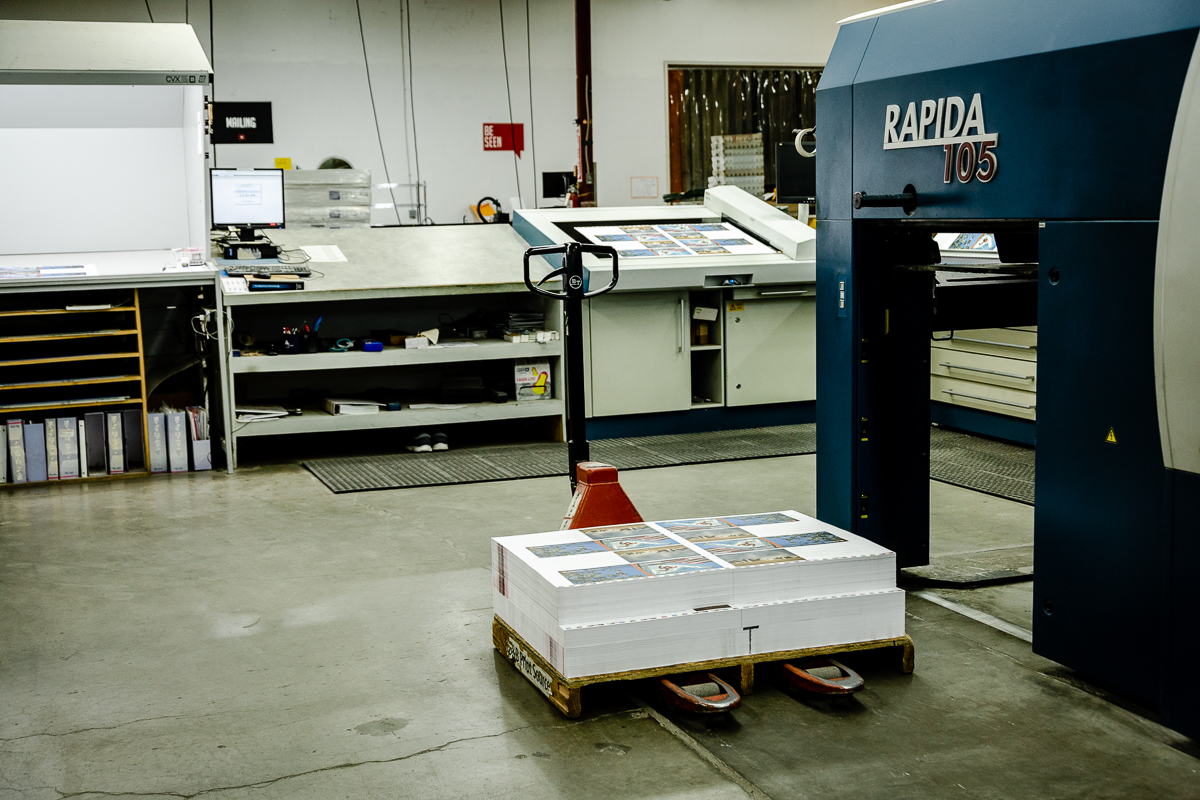Be sure to download this printable version of sheet-fed printing terms and visit our solutions page to learn more!
Your print materials are often the first impression you make on potential customers. Whether it’s a brochure, a flier, or a high-quality catalog, the method you choose for printing can significantly impact the final product. Among the various printing methods available, sheet-fed printing is one of the most popular and versatile. In this first of a three-part series, we’ll introduce you to the fundamentals of sheet-fed printing, helping you understand why it might be the right choice for your next project.
What is Sheet-Fed Printing?
Sheet-fed printing is a type of offset printing where individual sheets of paper are fed into the press, rather than using a continuous roll of paper as in web printing. This method is particularly well-suited for high-quality, short- to medium-run jobs, making it ideal for businesses that need sharp, vibrant prints without the expense of large-scale runs.
How It Works
In a sheet-fed press, sheets of paper are manually or automatically fed into the press. The printing process begins with a metal plate that carries the image to be printed. Ink is applied to the plate, which then transfers the image onto a rubber blanket. The blanket, in turn, presses the image onto the paper. The result is a crisp, clear print that can be used for a variety of marketing materials.
Advantages of Sheet-Fed Printing
- Quality Control: One of the biggest advantages of sheet-fed printing is its superior quality control. Since sheets are printed individually, it’s easier to monitor and adjust the process for consistent color and detail across the entire print run.
- Versatility: Sheet-fed presses can handle a wide range of paper sizes, weights, and finishes, offering flexibility for different types of projects.
- Short- to Medium-Run Efficiency: For jobs that don’t require large quantities, sheet-fed printing is more cost-effective than web printing, as it minimizes waste and setup costs.
Understanding the basics of sheet-fed printing can help you make informed decisions about your print projects. Whether you need a small batch of high-quality brochures or a custom catalog, sheet-fed printing offers the quality and versatility you need. In the next blog, we’ll dive deeper into the technical aspects and terminologies associated with this printing method, so you can feel even more confident in your choices.
Terms You Should Know:
- Offset Printing: A printing technique where an inked image is transferred from a plate to a rubber blanket, then onto the printing surface.
- Sheet-Fed Press: A type of printing press that uses individual sheets of paper, rather than a continuous roll.
- Plate: A metal sheet that carries the image to be printed.
- Blanket: A rubber sheet that transfers the image from the plate to the paper.
- Prepress: The process of preparing digital files for printing, including color separation, proofing, and plate-making.
- Color Management: Techniques used to ensure consistent color throughout the print run.
- Spot Color: A pre-mixed ink used in printing to achieve specific hues not possible with standard CMYK inks.
- CMYK: Stands for Cyan, Magenta, Yellow, and Key (Black); the four basic colors used in printing.
- Finishing: Post-printing processes such as coating, embossing, and die-cutting that enhance the appearance of the printed material.
- Coating: A finishing process that adds a protective or decorative layer to printed material.

